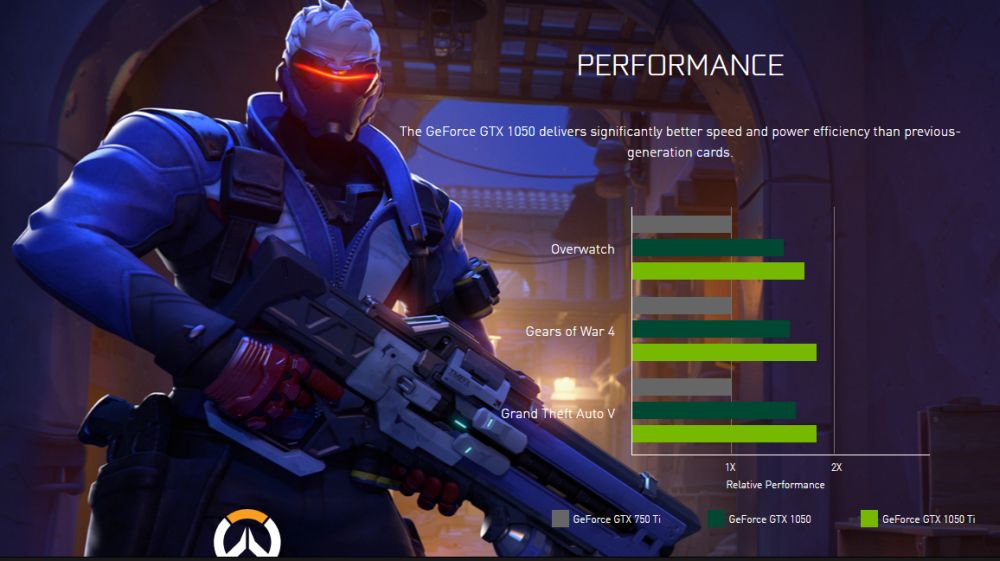As rumored earlier and now confirmed by Nvidia, the Geforce GTX 1050 Ti is based on a fully-enabled GP107 Pascal GPU with 6 Streaming Multiprocessor (SM) clusters adding up to 768 CUDA cores, 48 TMUs and 32 ROPs. Nvidia has decided to equip the GTX 1050 Ti with 4GB of GDDR5 memory on a 128-bit memory interface. According to provided specifications, the GPU on reference versions works at 1290MHz base and 1392MHz GPU Boost clock while memory ends up clocked at 7.0GHz, adding up to 112GB/s of memory bandwidth.
The Geforce GTX 1050 is based on a cut-down version of the same GP107 GPU, featuring 5 streaming multiprocessor (SM) clusters, ending up with 640 CUDA cores, 40 TMUs and same 32 ROPs. The reference GTX 1050 will come with 2GB of GDDR5 memory on the same 128-bit memory interface but we expect some partners to come up with 4GB versions.
The Geforce GTX 1050 is also clocked a bit higher so it works at 1354MHz for the GPU base and 1455MHz for the GPU Boost clocks but there will be plenty of custom factory-overclocked versions which will push those clocks even higher. The memory works at the same 7.0GHz, leaving it with the same 112GB/s of memory bandwidth.

According to Nvidia's own slide which compares the GTX 1050 Ti and GTX 1050 to the previously available entry-level GTX 750 Ti, the new GP107 should almost double the performance, at least in the GTX 1050 Ti case, but the main improvements will be on the power efficiency side with both GTX 1050 Ti and GTX 1050 featuring a 75W TDP and do not need additional PCIe power from the PSU, at least unless you want more overclocking potential.

Nvidia AIB partners will come up with custom versions from day one and plenty of them have already announced their entire lineups with some even featuring high-end dual-slot dual-fan cooling solutions.
Nvidia says that both the GTX 1050 Ti and GTX 1050 should be available in retail/e-tail as of October 25th with an MSRP set at US $139 and US $109, respectively.




